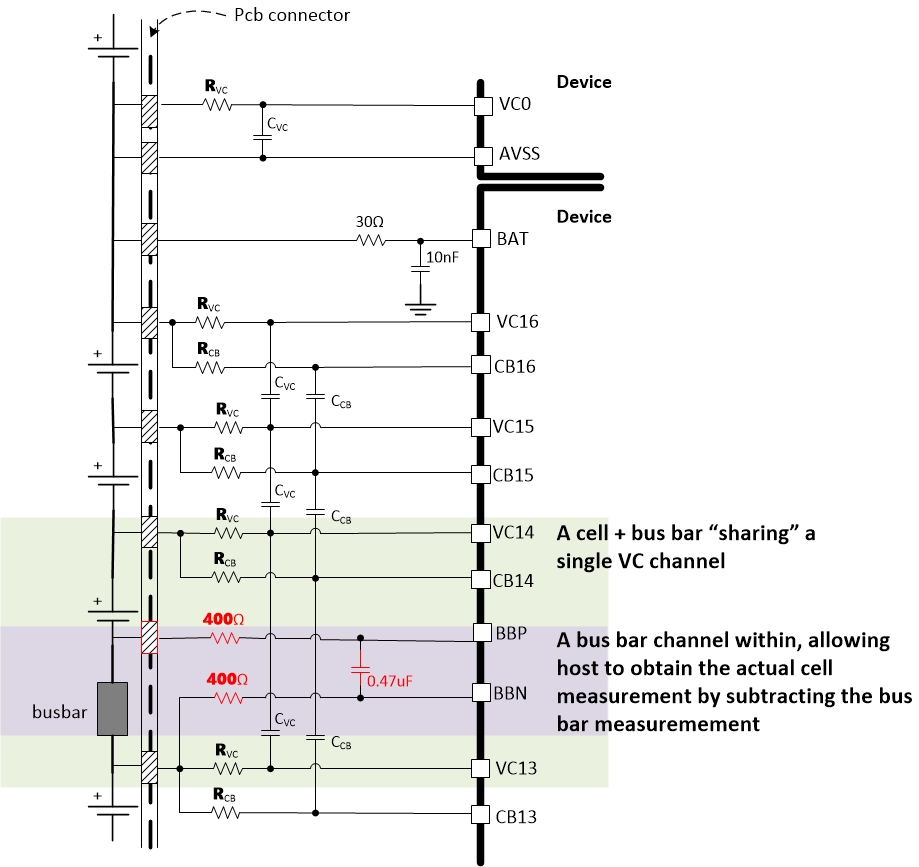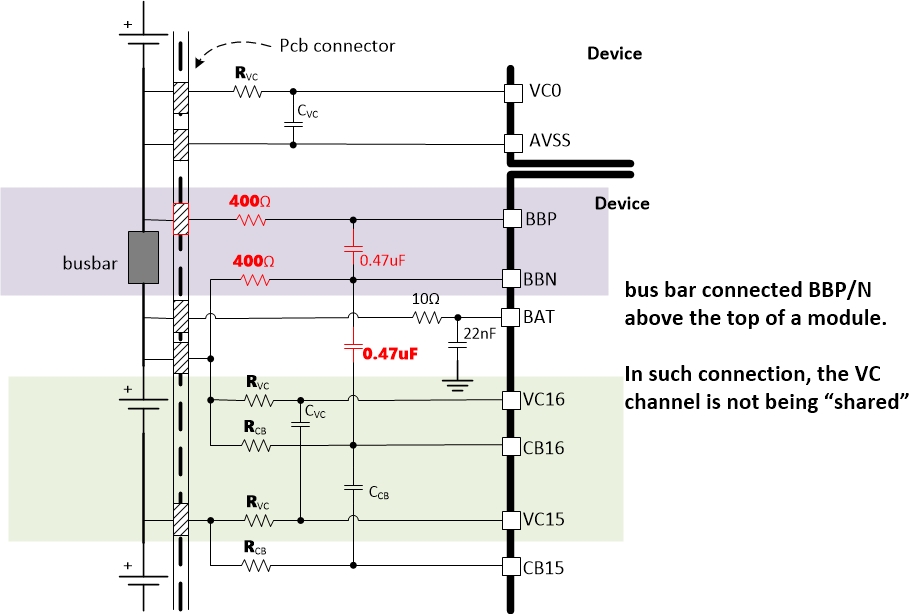SLVAE87A December 2020 – October 2023 BQ79600-Q1 , BQ79612-Q1 , BQ79614-Q1 , BQ79616-Q1 , BQ79652-Q1 , BQ79654-Q1 , BQ79656-Q1
- 1
- Abstract
- Trademarks
- 1 NPN LDO Supply
- 2 AVDD, CVDD outputs and DVDD, NEG5, REFHP and REFHM
- 3 OTP Programming
- 4 Cell Voltage Sense (VCn) and Cell Balancing (CBn)
- 5 Bus Bar Support
- 6 TSREF
- 7 General Purpose Input-Output (GPIO) Configurations
- 8 Base and Bridge Device Configuration
- 9 Daisy-Chain Stack Configuration
- 10Multi-Drop Configuration
- 11Main ADC Digital LPF
- 12AUX Anti Aliasing Filter (AAF)
- 13Layout Guidelines
- 14BCI Performance
- 15Common and Differential Mode Noise
- 16Revision History
5.2 Typical Connection
With the bus bar connected to BBP/BBN, it is intended to allow a single cell channel (VC channel) to be shared with a cell + a bus bar (see Figure 5-3 connection). Usually, such a connection introduces additional IR error to the cell measurement to the system. The dedicated bus bar channel through BBP/BBN supported in the device allows the host to measure the bus bar voltage to obtain the actual cell measurement.
The connection in Figure 5-3 applies if the bus bar is connected to any middle VC channel. That is, in a single device, there is a cell connected above and below the BBP/BBN channel. To support hotplug on the bus bar channel, the device only requires a 400-Ω filter resistor each on BBP/N pins and a 0.47-µF/16-V differential capacitor across BBP/N pins.

If the bus bar connected to BBP/N is placed at the top of a module (see Figure 5-4 connection), such connection is the exception in the BBP/N case that a cell channel is NOT being shared. In this connection, actual cell measurements are made through the VC channels and the host does not require performed addition calculation.
The connection in Figure 5-4 applies if the bus bar is connected to the top of the module, where in a single device, no cell is connected above the bus bar. To support hotplug on the bar channel, besides the 400-Ω filter resistor each on BBP/N pins and a 0.47-µF/16-V differential capacitor across BBP/N pins. If the bus bar is used above the top cell then also an additional 0.47-µF/16-V differential capacitor is needed to connect from BBN to the top CB pin. This additional capacitor forms a complete capacitor ladder from all the cells in the module to the bus bar, allowing high spike voltage during hotplug to distributor across the capacitor ladder.
